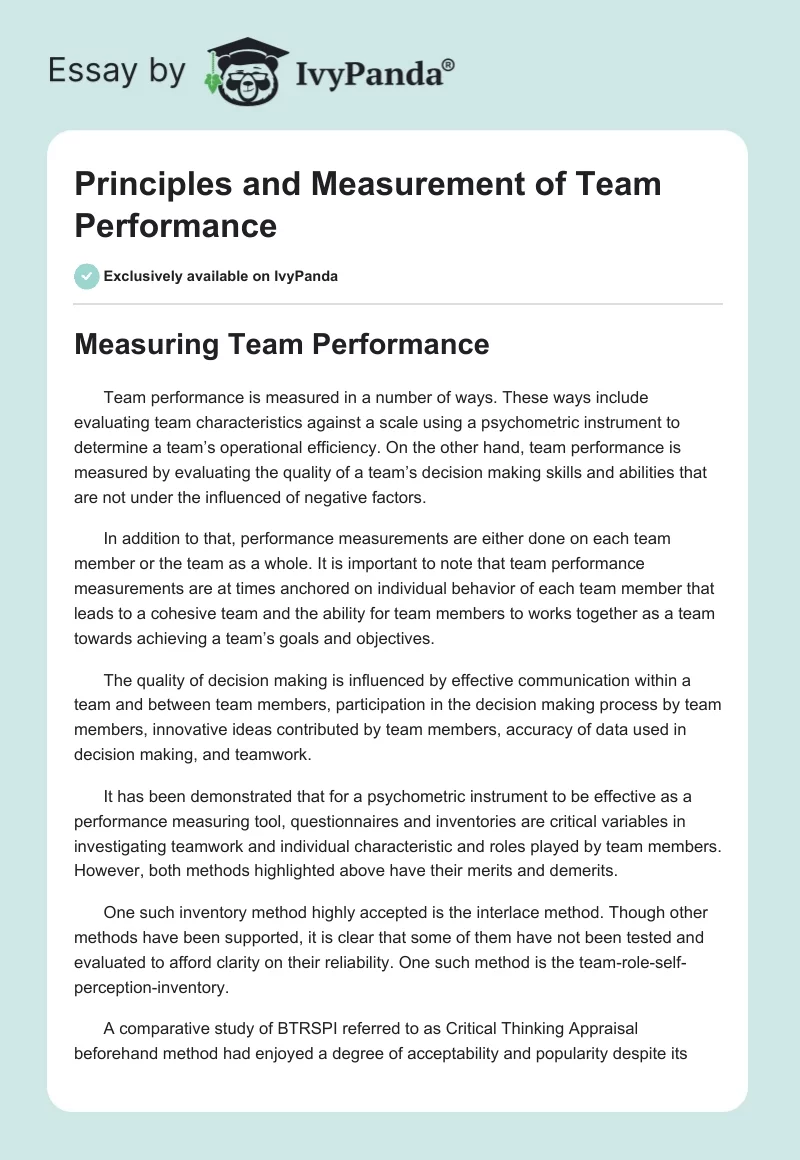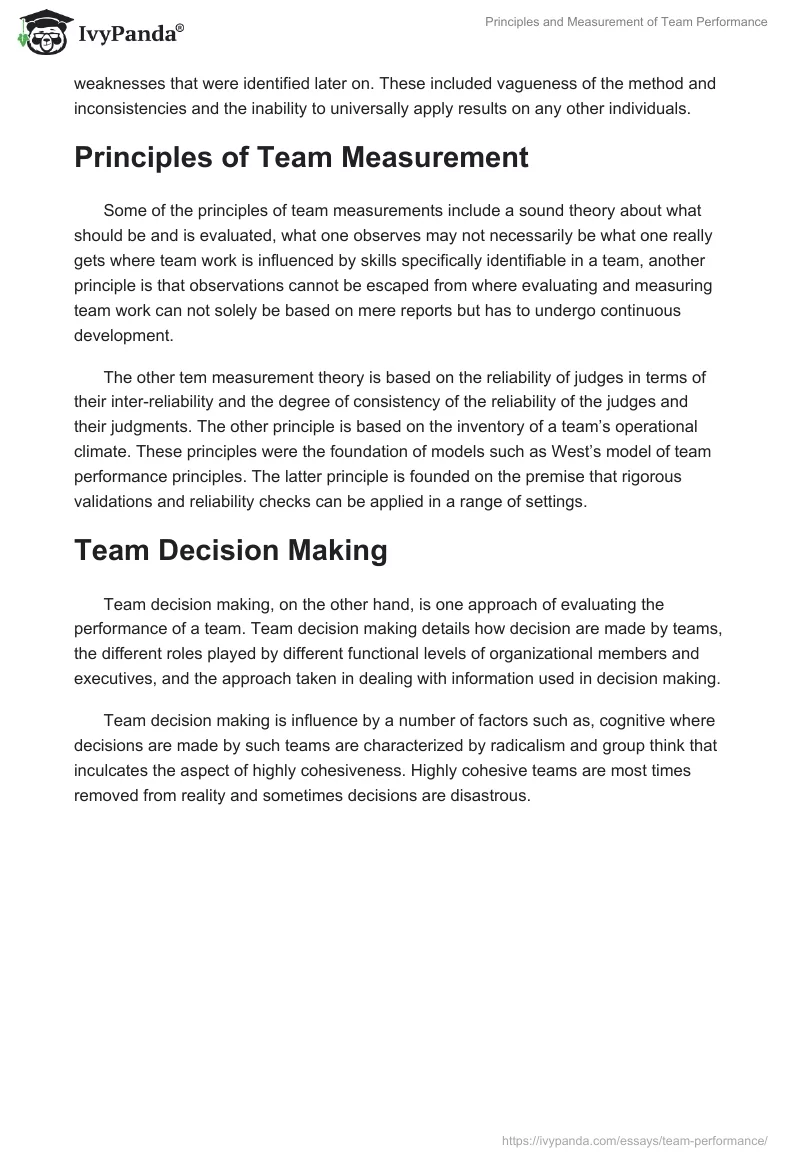Measuring Team Performance
Team performance is measured in a number of ways. These ways include evaluating team characteristics against a scale using a psychometric instrument to determine a team’s operational efficiency. On the other hand, team performance is measured by evaluating the quality of a team’s decision making skills and abilities that are not under the influenced of negative factors.
In addition to that, performance measurements are either done on each team member or the team as a whole. It is important to note that team performance measurements are at times anchored on individual behavior of each team member that leads to a cohesive team and the ability for team members to works together as a team towards achieving a team’s goals and objectives.
The quality of decision making is influenced by effective communication within a team and between team members, participation in the decision making process by team members, innovative ideas contributed by team members, accuracy of data used in decision making, and teamwork.
It has been demonstrated that for a psychometric instrument to be effective as a performance measuring tool, questionnaires and inventories are critical variables in investigating teamwork and individual characteristic and roles played by team members. However, both methods highlighted above have their merits and demerits.
One such inventory method highly accepted is the interlace method. Though other methods have been supported, it is clear that some of them have not been tested and evaluated to afford clarity on their reliability. One such method is the team-role-self-perception-inventory.
A comparative study of BTRSPI referred to as Critical Thinking Appraisal beforehand method had enjoyed a degree of acceptability and popularity despite its weaknesses that were identified later on. These included vagueness of the method and inconsistencies and the inability to universally apply results on any other individuals.
Principles of Team Measurement
Some of the principles of team measurements include a sound theory about what should be and is evaluated, what one observes may not necessarily be what one really gets where team work is influenced by skills specifically identifiable in a team, another principle is that observations cannot be escaped from where evaluating and measuring team work can not solely be based on mere reports but has to undergo continuous development.
The other tem measurement theory is based on the reliability of judges in terms of their inter-reliability and the degree of consistency of the reliability of the judges and their judgments. The other principle is based on the inventory of a team’s operational climate. These principles were the foundation of models such as West’s model of team performance principles. The latter principle is founded on the premise that rigorous validations and reliability checks can be applied in a range of settings.
Team Decision Making
Team decision making, on the other hand, is one approach of evaluating the performance of a team. Team decision making details how decision are made by teams, the different roles played by different functional levels of organizational members and executives, and the approach taken in dealing with information used in decision making.
Team decision making is influence by a number of factors such as, cognitive where decisions are made by such teams are characterized by radicalism and group think that inculcates the aspect of highly cohesiveness. Highly cohesive teams are most times removed from reality and sometimes decisions are disastrous.


